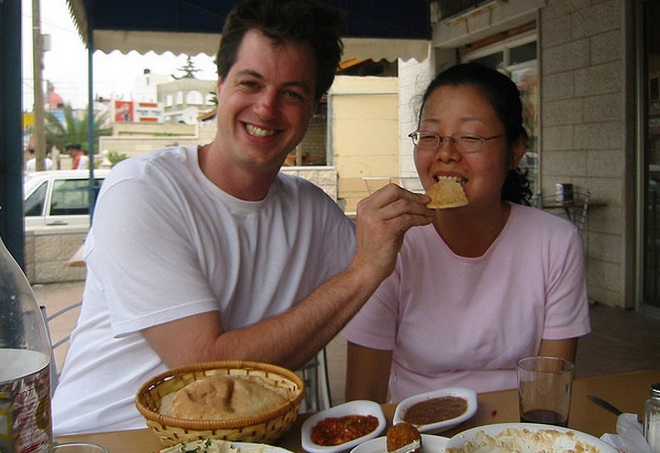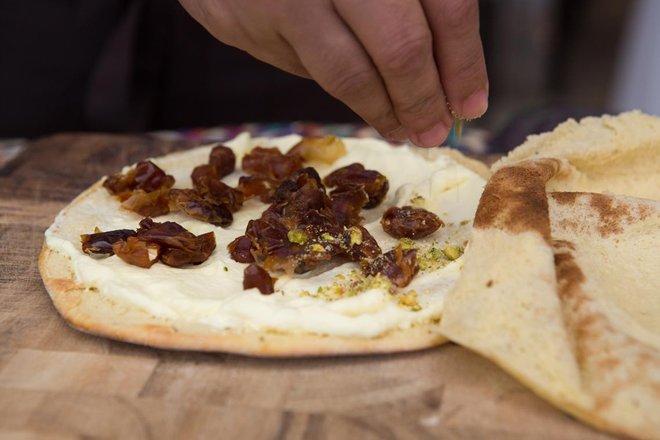
Simit, the Iraqi bagel on your head
Bread holds a special place in Middle Eastern culture, serving not only as a staple food but also as a symbol of hospitality, community, and tradition. The diverse and rich history of the Middle East is reflected in its bread-making techniques, which vary across regions. In this guide, we’ll explore the fascinating world of Middle Eastern bread traditions, from the ingredients used to the methods employed in creating these delectable staples.
- Varieties of Middle Eastern Bread: Middle Eastern countries boast a wide array of bread varieties, each with its unique flavor, texture, and purpose. Some of the most prominent types include:
- Pita Bread (Khobz/Arabic Bread): A round, flatbread with a pocket, perfect for stuffing with various ingredients or for eating with olive oil and za’atar.
- Naan: A leavened, oven-baked flatbread common in Iran, Central Asia, and parts of the Middle East.
- Lavash: A thin, unleavened flatbread with a soft texture, often used for wrapping or dipping. Lavash is one of the most widespread types of bread in Armenia, Azerbaijan, Iran and Turkey.
- Markook: Also known as “Arabian Mountain Bread,” this thin, unleavened bread is commonly enjoyed in Levantine countries. Markook shrak is a type of thin bread. The dough is unleavened and usually made with only flour, water, and salt, and after being rested and divided into round portions, flattened and spread across a round cushion until it is thin then flipped onto the saj. It is often folded and put in bags before being sold.
- Jump down to the bottom of this article where you will get recipes for breads from Morocco, Yemen, Iraq, The Emirates, Yemen, Israel and Jordan.
- Traditional Techniques:
Haguy Ben Yehuda making emmer wheat into sourdough bread
- Tandoor Oven: In some regions, bread is baked in a traditional tandoor oven, which imparts a unique smoky flavor and a characteristic texture.
- Griddle Baking: Flatbreads like pita and lavash are often cooked on a griddle or saj (convex griddle), allowing for quick and even cooking.
- Sourdough Fermentation: Some traditional breads, such as Persian Barbari, use natural sourdough fermentation for leavening, resulting in a tangy flavor.
- Ceremonial and Festive Breads:
Oriental bread moulds used for Christenings, Eid or good celebrations. Image via Lebanon Postcard.
- Eid Bread: During festive occasions like Eid, special bread varieties are prepared, such as the sweet Iranian Noon-e Sheereen. They resemble the festive bread of the Bukharian Jews.
- Wedding Bread: In many Middle Eastern cultures, weddings are celebrated with elaborate bread designs and decorations, symbolizing prosperity and fertility. In Spain there is wedding bread dance where the bread goes on the head.
- Culinary Customs:
- Bread as a Utensil: In some Middle Eastern countries, bread is used as a utensil for scooping up food, emphasizing communal eating.
This is a couple eating hummus.
- Bread and Dips: Various breads are served alongside an assortment of dips, like hummus, baba ganoush, and tahini.
- Bread as a Utensil: In some Middle Eastern countries, bread is used as a utensil for scooping up food, emphasizing communal eating.
Middle Eastern bread traditions are deeply rooted in history, reflecting the diverse cultures and culinary practices of the region. Whether it’s the comforting aroma of baking bread in a tandoor or the joy of tearing into a freshly baked pita, the bread culture in the Middle East is a testament to the importance of this humble yet essential food item in daily life. As you delve into the world of Middle Eastern bread, you’ll discover not only delicious flavors but also a rich tapestry of traditions that have stood the test of time.
Get some Middle East bread recipes?








